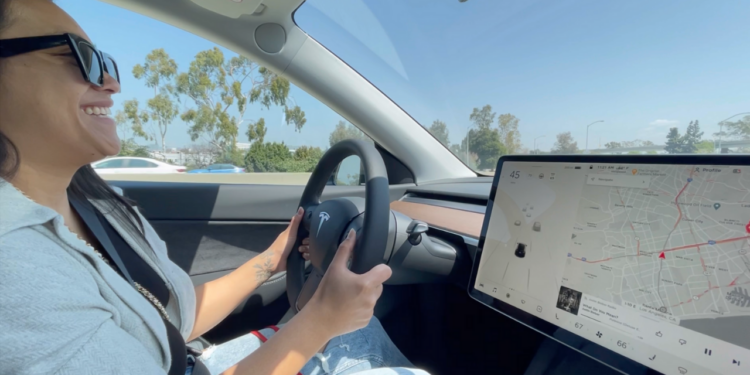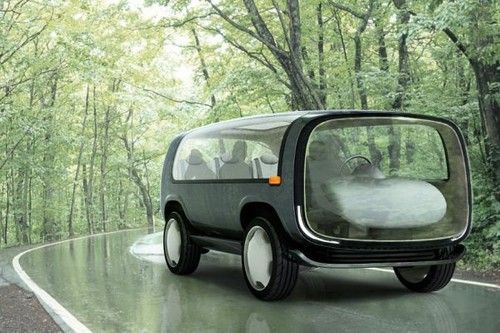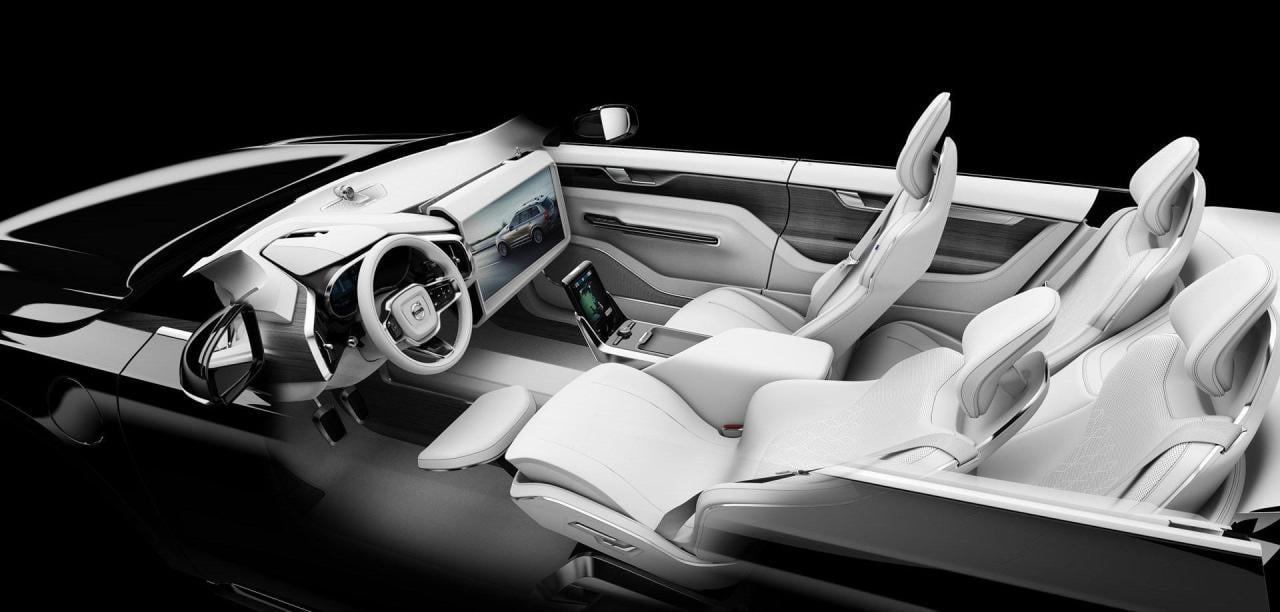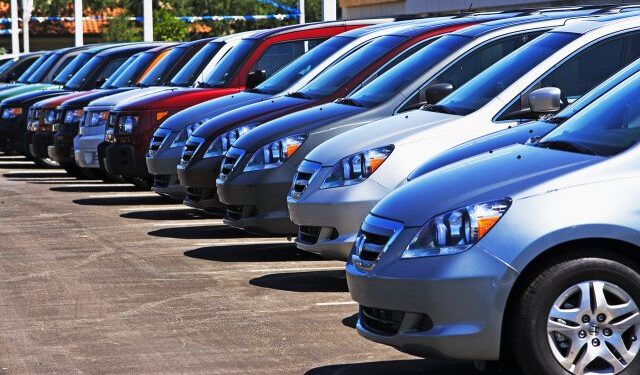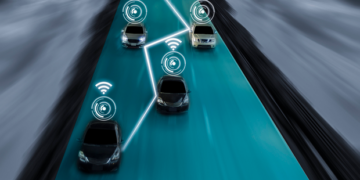In today’s fast-evolving automotive landscape, groundbreaking safety innovations are not only saving lives but also redefining the entire driving experience. The convergence of advanced sensor technology, artificial intelligence, and real-time data processing has led to systems that predict hazards, minimize human error, and provide unprecedented levels of protection on the road. This article delves into the latest car safety technologies, examining how they transform driving from a potentially perilous activity into a safer, smarter, and more enjoyable experience.
As we move towards an era of autonomous vehicles and smart mobility, the importance of innovative safety measures cannot be overstated. In the following sections, we explore the evolution of car safety, the state-of-the-art technologies now available, their impacts on driver behavior, and future trends that promise to further revolutionize the way we travel. Whether you are a car enthusiast, a technology buff, or simply someone who values safety on the road, understanding these advancements is essential.
Evolution of Car Safety: A Historical Perspective
Car safety has come a long way from the early days of automotive design. Initially, the focus was on basic structural integrity and rudimentary braking systems. Over time, as the number of vehicles on the road increased, so did the demand for improved safety measures. Early innovations such as seat belts and airbags set the stage for today’s high-tech safety systems.
A. Pioneering Developments
Historically, several key innovations laid the groundwork for modern safety standards:
A. Seat Belts: Introduced as a simple yet effective method to reduce injuries during collisions.
B. Airbags: Developed to cushion the impact in a crash, significantly lowering the risk of severe injuries.
C. Anti-lock Braking Systems (ABS): Enabled drivers to maintain steering control during sudden braking.
D. Crumple Zones: Engineered areas in a vehicle designed to absorb the energy of impact, reducing the force transmitted to occupants.
These early measures were revolutionary in their time. However, as technology advanced, the need for more sophisticated systems became evident, especially with the rise in vehicular speeds and the complexity of urban driving environments.
Modern Car Safety Innovations
Today’s safety systems extend far beyond these initial developments. Modern vehicles are equipped with a host of technologies designed to prevent accidents before they occur and protect occupants in the event of a collision. These innovations are largely driven by the integration of computer systems, sensors, and connectivity that enable real-time decision making.
A. Advanced Driver Assistance Systems (ADAS)
ADAS has become a cornerstone of modern car safety, providing a suite of features that enhance driver awareness and mitigate risks. These systems use cameras, radar, and lidar sensors to monitor the vehicle’s surroundings and assist with critical tasks.
A. Autonomous Emergency Braking (AEB): Automatically applies the brakes when a collision is imminent.
B. Adaptive Cruise Control (ACC): Adjusts the vehicle’s speed to maintain a safe distance from the car ahead.
C. Lane-Keeping Assist (LKA): Helps keep the vehicle centered in its lane.
D. Blind Spot Monitoring (BSM): Alerts drivers to vehicles in their blind spots.
E. Traffic Sign Recognition (TSR): Reads road signs and informs the driver about speed limits and other regulations.
By integrating these features, ADAS not only reduces the likelihood of accidents but also provides drivers with a more relaxed and confident driving experience.
B. Intelligent Sensor Technologies
The rapid advancement in sensor technology has revolutionized how vehicles detect and react to potential hazards. Sensors now capture detailed information about the vehicle’s environment, enabling proactive safety measures.
A. Cameras: High-resolution cameras provide a 360-degree view of the surroundings, facilitating functions like parking assistance and collision warnings.
B. Radar Sensors: Emit radio waves to determine the distance and speed of nearby objects, crucial for adaptive cruise control and collision avoidance.
C. Lidar Systems: Use laser beams to create precise 3D maps of the environment, enhancing object detection even in low-visibility conditions.
D. Ultrasonic Sensors: Commonly used in parking assist systems, these sensors detect obstacles close to the vehicle.
These sensors work in concert to create a robust network of detection capabilities, ensuring that the vehicle can respond quickly to any potential danger.
C. The Role of Artificial Intelligence (AI) and Machine Learning
Artificial intelligence and machine learning are at the heart of modern car safety innovations. By processing massive amounts of data in real time, AI systems can predict and react to driving scenarios faster than any human could.
A. Predictive Analytics: AI analyzes data from various sensors to predict potential hazards, such as sudden braking or unexpected obstacles.
B. Real-Time Decision Making: Machine learning algorithms evaluate complex scenarios and determine the best course of action to prevent accidents.
C. Continuous Improvement: As vehicles gather more data, AI systems learn and adapt, continuously improving safety protocols and performance.
These technologies are not only enhancing current safety features but are also paving the way for fully autonomous vehicles, where human error is minimized, and safety is maximized.
Impact on Driving Experiences
The integration of these innovative safety systems is transforming how we experience driving. Beyond simply reducing accident rates, these technologies have broader implications for the overall driving experience.
A. Enhanced Driver Confidence
With the advent of advanced safety features, drivers are more confident behind the wheel. The knowledge that their vehicle is equipped with state-of-the-art technology to assist in critical moments reduces anxiety and allows for a more relaxed driving experience. For instance, systems like adaptive cruise control and lane-keeping assist handle routine driving tasks, enabling drivers to focus on more complex situations.
B. Improved Road Safety
One of the most significant impacts of car safety innovations is the reduction in traffic accidents and fatalities. Studies have shown that vehicles equipped with ADAS and other advanced safety features have a considerably lower rate of collisions. This not only protects individual drivers but also contributes to overall public safety by reducing the likelihood of multi-vehicle pile-ups and chain-reaction accidents.
C. Transforming Insurance and Legal Frameworks
As car safety technologies advance, the automotive insurance industry and legal frameworks are evolving accordingly. Insurance companies are beginning to offer discounts for vehicles with enhanced safety features, reflecting the reduced risk of accidents. Moreover, as autonomous driving becomes more prevalent, questions of liability in the event of an accident are prompting changes in legal standards and insurance policies.
D. Redefining the Role of the Driver
The rise of semi-autonomous and fully autonomous vehicles is prompting a redefinition of what it means to be a driver. With safety systems taking over many aspects of vehicle control, the traditional role of the driver is shifting towards a supervisory role. This transition raises important questions about driver engagement, skill retention, and the ethical implications of relinquishing control to automated systems.
E. Environmental and Economic Benefits
In addition to safety improvements, innovative car technologies are contributing to environmental sustainability and economic efficiency. Improved fuel efficiency, reduced emissions, and the optimization of driving patterns all contribute to a greener future. Moreover, the cost savings from fewer accidents and lower insurance premiums can have a significant economic impact for both individuals and society as a whole.
In-Depth Analysis of Key Safety Technologies
To understand the transformative impact of car safety innovations, it is essential to delve deeper into the technologies that are driving these changes. Below is a detailed examination of several key safety systems and their functionalities.
A. Autonomous Emergency Braking (AEB)
Autonomous Emergency Braking is one of the most critical safety features available in modern vehicles. AEB systems use a combination of sensors and cameras to detect obstacles in the vehicle’s path and automatically apply the brakes if a collision is imminent.
A. Detection Range: AEB systems are capable of detecting obstacles from a significant distance, allowing for timely intervention.
B. Speed Adaptation: These systems adjust braking force based on the vehicle’s speed and the distance to the detected object.
C. Collision Avoidance: By automatically applying the brakes, AEB reduces the severity of collisions or, in some cases, prevents them entirely.
The integration of AEB has been shown to reduce rear-end collisions and has become a standard feature in many new vehicles.
B. Adaptive Cruise Control (ACC)
Adaptive Cruise Control enhances the traditional cruise control system by automatically adjusting the vehicle’s speed to maintain a safe distance from the car ahead. This technology is particularly useful on highways and in heavy traffic.
A. Speed Regulation: ACC monitors the speed of the vehicle in front and adjusts accordingly to ensure a consistent gap.
B. Traffic Adaptation: In stop-and-go traffic, ACC can bring the vehicle to a complete stop and then resume movement when the road clears.
C. Driver Assistance: By reducing the need for constant speed adjustments, ACC alleviates driver fatigue and improves overall comfort during long journeys.
C. Lane-Keeping Assist (LKA)
Lane-Keeping Assist helps prevent accidents by ensuring that the vehicle remains within its designated lane. Using cameras and sensors, LKA detects lane markings and gently steers the vehicle back into place if it begins to drift.
A. Real-Time Monitoring: Continuous scanning of lane markers allows LKA to detect even subtle deviations.
B. Corrective Steering: The system applies minor steering adjustments to realign the vehicle, ensuring safe travel.
C. Integration with Other Systems: LKA often works in tandem with other ADAS features, such as adaptive cruise control, for enhanced safety.
D. Blind Spot Monitoring (BSM)
Blind Spot Monitoring is designed to alert drivers to vehicles that may be in their blind spots—areas not visible in the rearview or side mirrors. This system is crucial for safe lane changes and merging.
A. Sensor Integration: BSM uses radar or ultrasonic sensors to detect vehicles approaching from behind.
B. Visual Alerts: Typically, a warning light appears on the side mirror or dashboard when a vehicle is detected.
C. Audible Alerts: In some systems, an audible alert accompanies the visual signal, further ensuring that the driver is aware of the potential hazard.
E. Collision Avoidance Systems
Collision avoidance systems are a combination of various safety features that work together to prevent accidents. These systems use data from multiple sensors to evaluate driving conditions and intervene when necessary.
A. Data Fusion: Collision avoidance relies on integrating data from cameras, radar, and lidar to form a comprehensive view of the environment.
B. Automated Responses: In critical situations, the system may perform emergency maneuvers such as braking or steering corrections.
C. Predictive Algorithms: Using machine learning, these systems can predict potential collision scenarios and take preventive measures.
Future Trends in Car Safety Innovations
The future of automotive safety is bright, with continuous research and development paving the way for even more advanced systems. Emerging technologies are expected to further enhance safety and redefine the driving experience.
A. Fully Autonomous Vehicles
The progression from semi-autonomous to fully autonomous vehicles is one of the most anticipated trends. With complete automation, human error could be drastically reduced, leading to safer roads and fewer accidents.
A. End-to-End Automation: Fully autonomous vehicles are expected to handle all driving tasks without human intervention.
B. Advanced Sensor Integration: Future cars will incorporate more sophisticated sensor arrays for improved situational awareness.
C. Regulatory and Ethical Considerations: As vehicles become fully autonomous, regulatory bodies and manufacturers must address complex legal and ethical issues.
B. Vehicle-to-Everything (V2X) Communication
Vehicle-to-Everything communication is an emerging technology that enables vehicles to communicate with other vehicles, infrastructure, and even pedestrians. This connectivity can prevent accidents and improve traffic management.
A. Real-Time Data Exchange: V2X allows vehicles to share information about road conditions, traffic congestion, and potential hazards.
B. Enhanced Navigation: Improved data can optimize routing and reduce travel time, contributing to overall safety.
C. Infrastructure Integration: Traffic signals and road signs equipped with V2X technology can relay critical information to drivers.
C. Augmented Reality (AR) Dashboards
Augmented Reality dashboards are set to transform the way drivers interact with their vehicles by overlaying critical information directly onto the windshield.
A. Enhanced Visibility: AR can display navigation directions, speed, and hazard alerts within the driver’s line of sight.
B. Interactive Displays: Future systems may allow drivers to interact with the AR display for a more intuitive experience.
C. Safety Integration: By reducing the need to glance away from the road, AR dashboards can significantly enhance driving safety.
D. Biometric Security Systems
As security concerns grow, biometric systems such as facial recognition and fingerprint scanners are becoming common in vehicles. These systems ensure that only authorized users can access and operate the vehicle.
A. Driver Identification: Biometrics verify the driver’s identity before the car starts.
B. Personalized Settings: Once identified, the vehicle can automatically adjust settings like seat position and mirror angles.
C. Enhanced Security: These systems provide an additional layer of security against theft and unauthorized use.
E. Smart Materials and Structural Innovations
Automotive manufacturers are increasingly using advanced materials to improve crashworthiness and overall safety.
A. Lightweight Composites: Materials that offer high strength-to-weight ratios help reduce vehicle mass while maintaining safety.
B. Energy-Absorbing Structures: Innovative designs that absorb impact energy can minimize damage during collisions.
C. Self-Healing Materials: Future technologies may incorporate materials capable of repairing minor damages automatically.
The Societal Impact of Car Safety Innovations
The ripple effects of advanced car safety technologies extend far beyond individual vehicles. They have the potential to transform societal norms, influence urban planning, and contribute to environmental sustainability.
A. Reduced Traffic Fatalities
The primary goal of all safety innovations is to reduce traffic fatalities. As more vehicles adopt advanced safety features, the number of fatal accidents is expected to decline significantly. This not only saves lives but also reduces the economic burden associated with accidents.
B. Economic Benefits
Fewer accidents mean lower costs for insurance companies, healthcare providers, and governments. Additionally, the development and production of high-tech safety systems generate new jobs and stimulate economic growth within the automotive and technology sectors.
C. Enhanced Urban Mobility
Smart car safety innovations contribute to a more efficient urban transport system. With reduced accident rates and improved traffic management through V2X communication, cities can experience less congestion and better air quality. These improvements have a direct impact on the quality of life for urban residents.
D. Shifting Consumer Expectations
Modern consumers are increasingly prioritizing safety when purchasing vehicles. As awareness of advanced safety features grows, manufacturers are compelled to innovate and invest in cutting-edge technologies. This shift in consumer expectations drives continuous improvement and fuels the competitive spirit within the auto industry.
Integrating Safety Innovations into Daily Driving
While the technological advancements are impressive, the real-world application of these systems is what ultimately makes a difference. Integrating these safety features into daily driving routines requires both technological infrastructure and a cultural shift in how drivers interact with their vehicles.
A. Driver Education and Training
Ensuring that drivers understand and effectively use these advanced safety systems is crucial. Comprehensive training programs and user-friendly interfaces can help bridge the gap between technology and practical application.
A. Workshops and Tutorials: Regular training sessions that demonstrate the functionalities of safety systems.
B. User Manuals and Guides: Detailed documentation that helps drivers understand the nuances of each feature.
C. Interactive Simulators: Virtual reality or simulator-based training to provide hands-on experience with advanced technologies.
B. Regular Maintenance and Software Updates
For these advanced systems to function optimally, regular maintenance and timely software updates are essential. Manufacturers are increasingly providing over-the-air updates to enhance system performance and security.
A. Scheduled Inspections: Routine checks to ensure all sensors and systems are functioning correctly.
B. Software Upgrades: Periodic updates that introduce new features and fix potential issues.
C. Customer Support: Access to dedicated support channels to resolve any technical difficulties promptly.
C. Encouraging a Safety-First Culture
Adopting a proactive approach to car safety goes beyond technology. It requires fostering a culture where safety is prioritized over convenience or speed.
A. Corporate Initiatives: Companies can promote safety by incorporating it into their core values and offering incentives for safe driving.
B. Public Awareness Campaigns: Governments and organizations can run campaigns to educate the public on the benefits of advanced car safety systems.
C. Community Engagement: Encouraging drivers to share experiences and tips on safe driving practices.
Conclusion
Car safety innovations have reached a transformative stage where technology not only prevents accidents but also enhances the overall driving experience. From advanced driver assistance systems to the integration of AI and machine learning, these innovations are redefining what it means to be safe on the road. The shift towards autonomous driving, connected vehicles, and smart materials is paving the way for a future where human error is minimized, and safety is maximized.
The benefits extend beyond individual drivers to society at large, reducing traffic fatalities, lowering economic burdens, and contributing to a more sustainable and efficient urban environment. As technology continues to evolve, the collaboration between automotive engineers, software developers, and regulatory bodies will be crucial in ensuring that these advancements translate into real-world safety improvements.
By embracing these technologies, manufacturers and drivers alike are embarking on a journey toward a safer, smarter, and more resilient future. The integration of these systems into everyday driving practices not only transforms the driving experience but also sets a new benchmark for what modern transportation can achieve.

